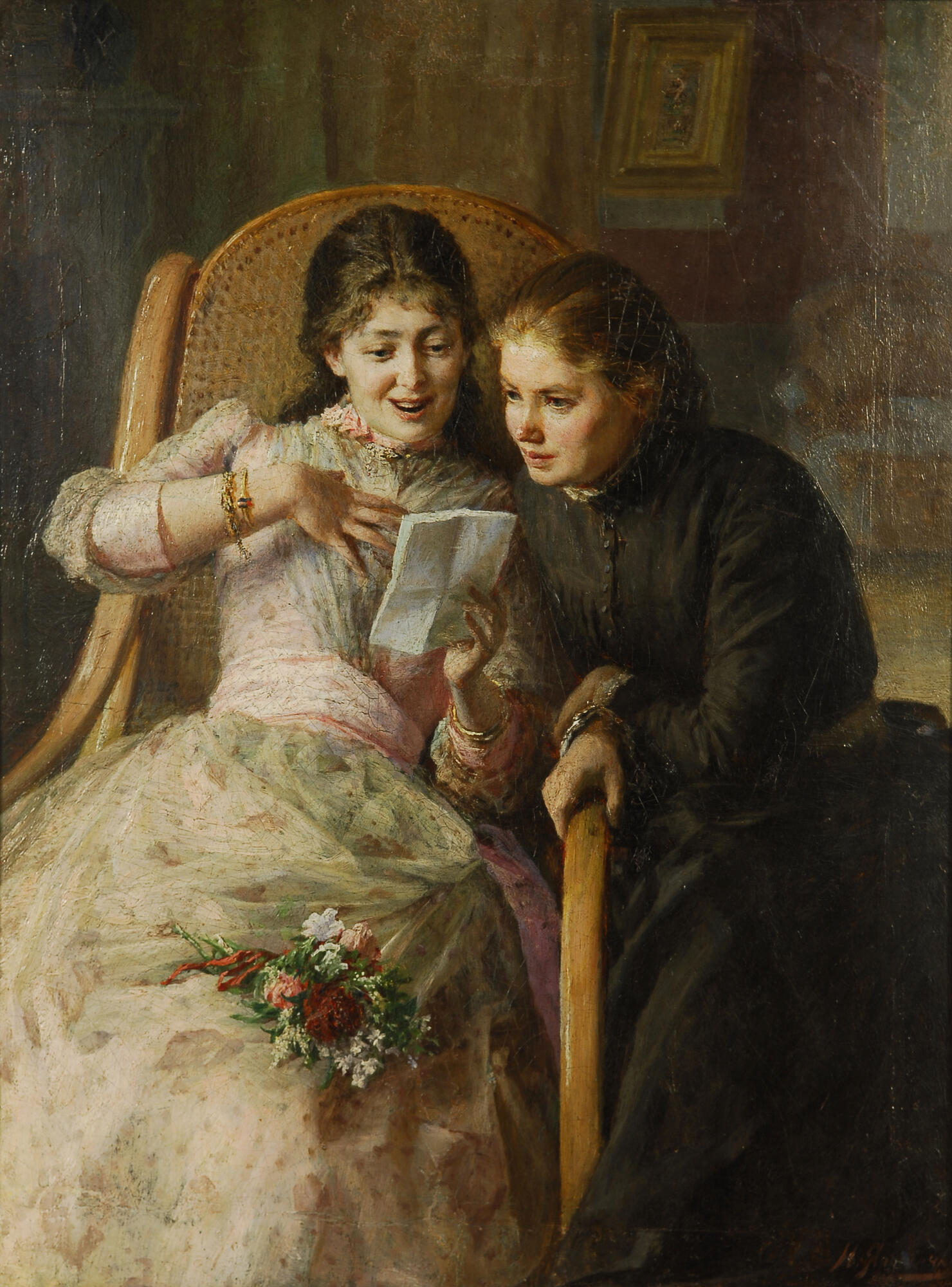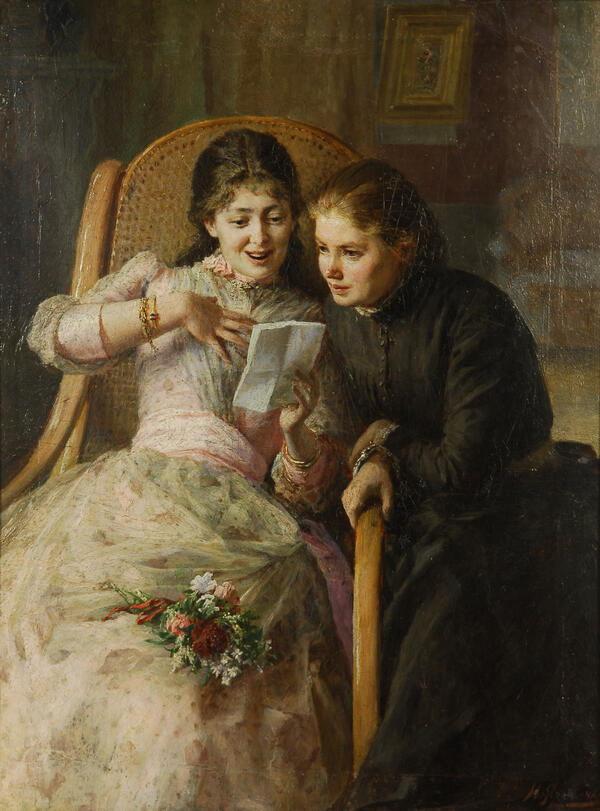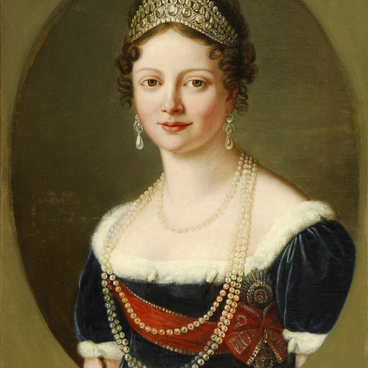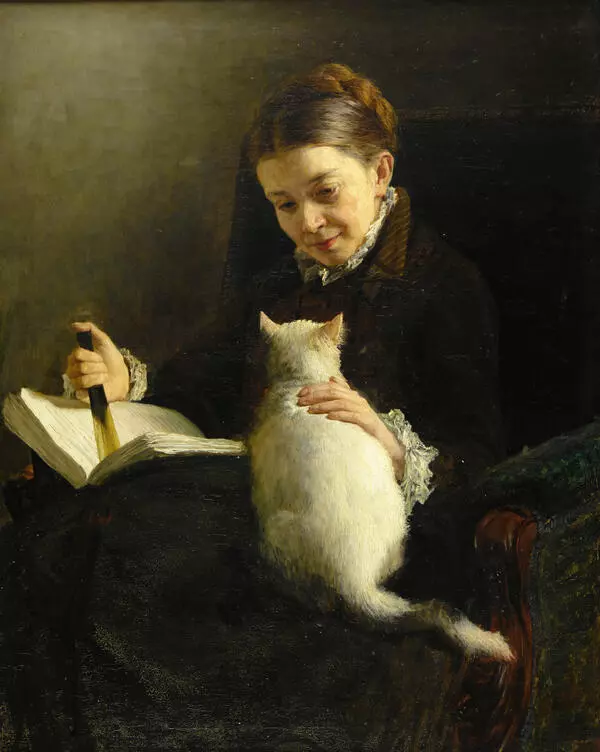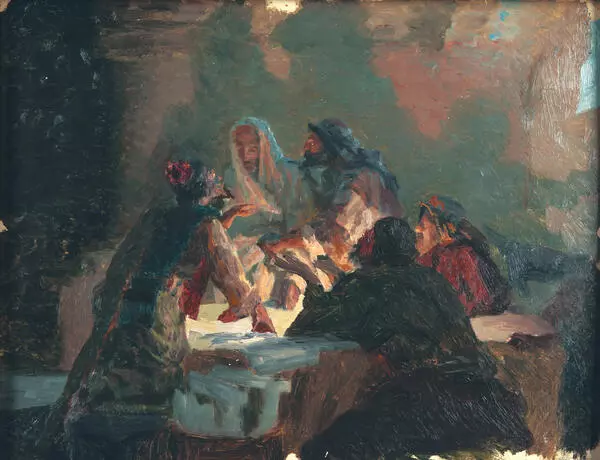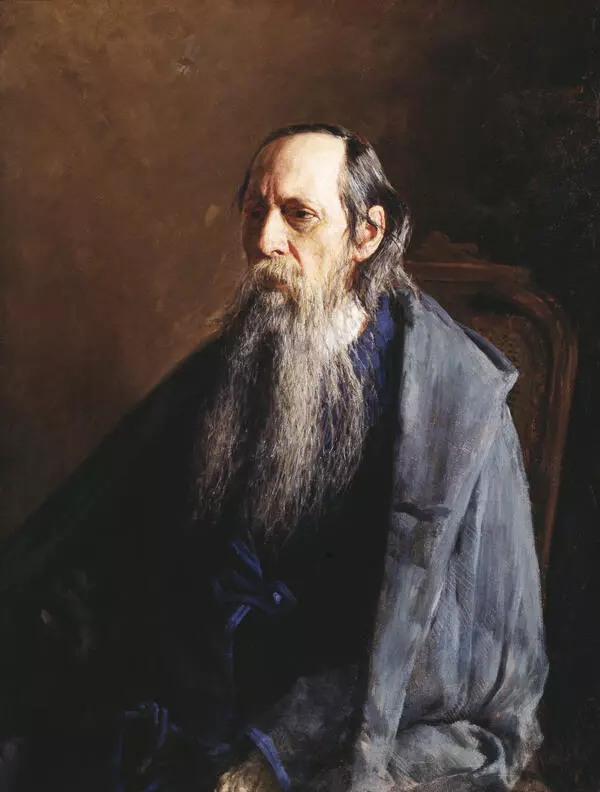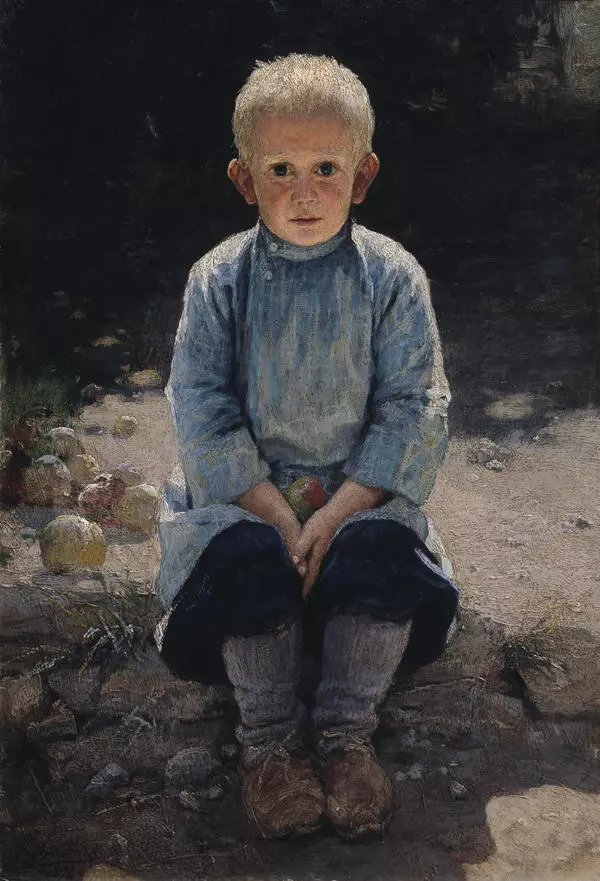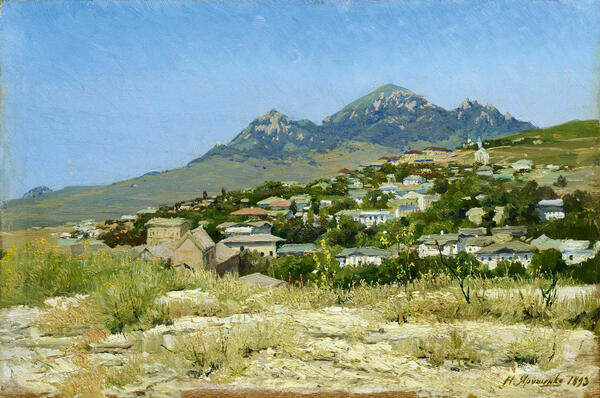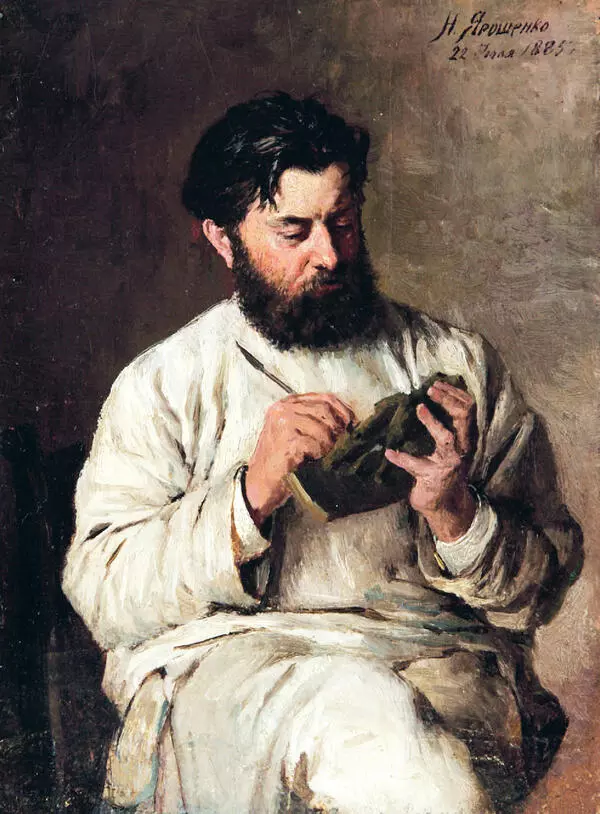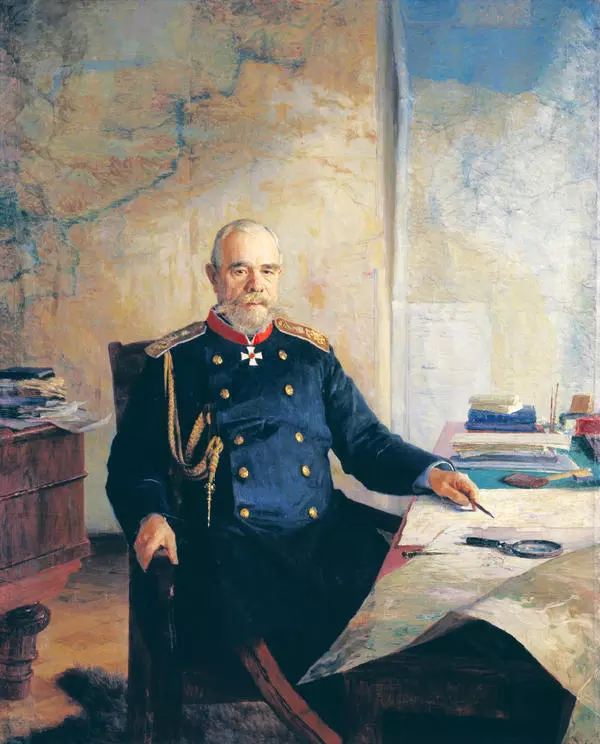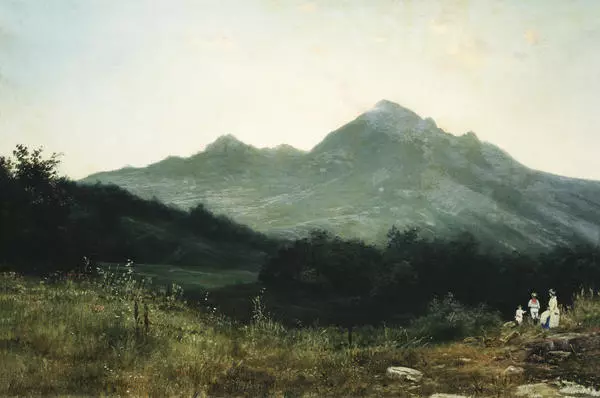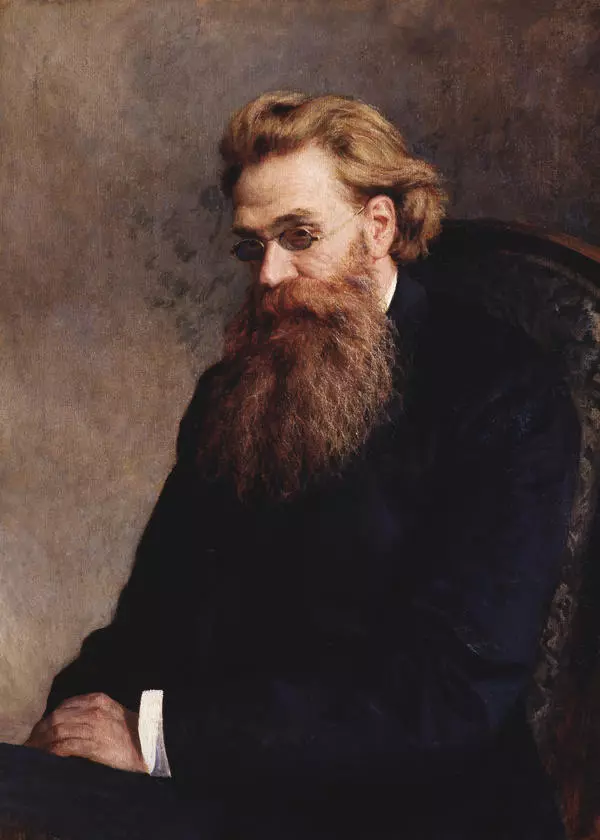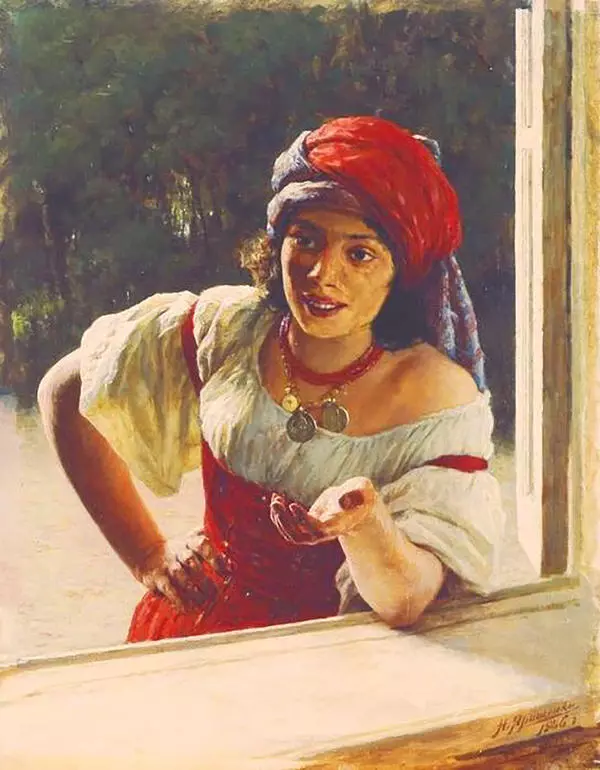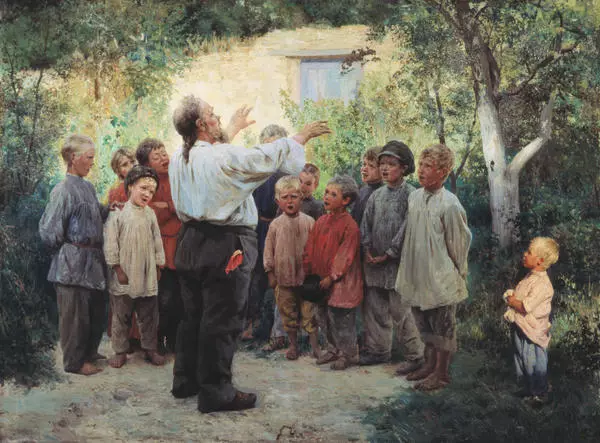Nikolai Yaroshenko painted the piece ‘Girls with a Letter’ in 1892. He portrayed a domestic scene with two friends. One of the girls, leaning her hand to her chest, enthusiastically reads the letter. On her knees lies a bouquet tied with a thin ribbon - the author makes it clear that the news came from an admirer, along with flowers. A friend sitting next to her listens carefully to the text. She smiles slightly, her detached gaze tells the viewer that she is immersed in herself. Most likely, she dreams of the same feelings.
The artist enlarged the composition, focusing all attention on the faces of the girls and their clothes. He also divided the canvas into light and dark parts by color. He painted the girl in love in a romantic light pink dress, decorated with lace and ribbons. Her face shows a naive youthful delight. At the same time, the author portrayed the image of a friend in a completely different way. The girl is much more balanced. A modest dark dress is buttoned up to the collar. But a slight smile and a dreamy look betray her attitude towards romance. Nikolai Yaroshenko managed to give exact characteristics to each character, without resorting to unnecessary details. Also, he gracefully emphasized that they are from the same social stratum — both girls’ hands are decorated with bracelets with bright stones.
Nikolai Yaroshenko lived from 1846 to 1920. His artistic talent manifested itself early, but the family insisted on a military career, and at the age of nine he was sent to the Poltava Cadet Corps. In 1863, the young man moved to St. Petersburg and entered the Mikhailovskoye Artillery School, at the same time becoming an unenrolled student at the Academy of Arts. Until 1892, the artist was in military service and retired with the rank of major general. But art remained the passion of his whole life.
In the early 1870s, the artist was a regular at drawing evenings with Ivan Kramskoy and Pavel Bryullov. He was inspired by the ideas of the Peredvizhniks and participated in exhibitions with them. His worldview was formed under the influence of the ideas of the narodnik movement and young revolutionaries. In his work, the artist thoughtfully revealed the spiritual world of the new Russian youth, who were actively involved in social life. He created accurate and capacious portraits, not overloading them with details, but grasping the very essence.
